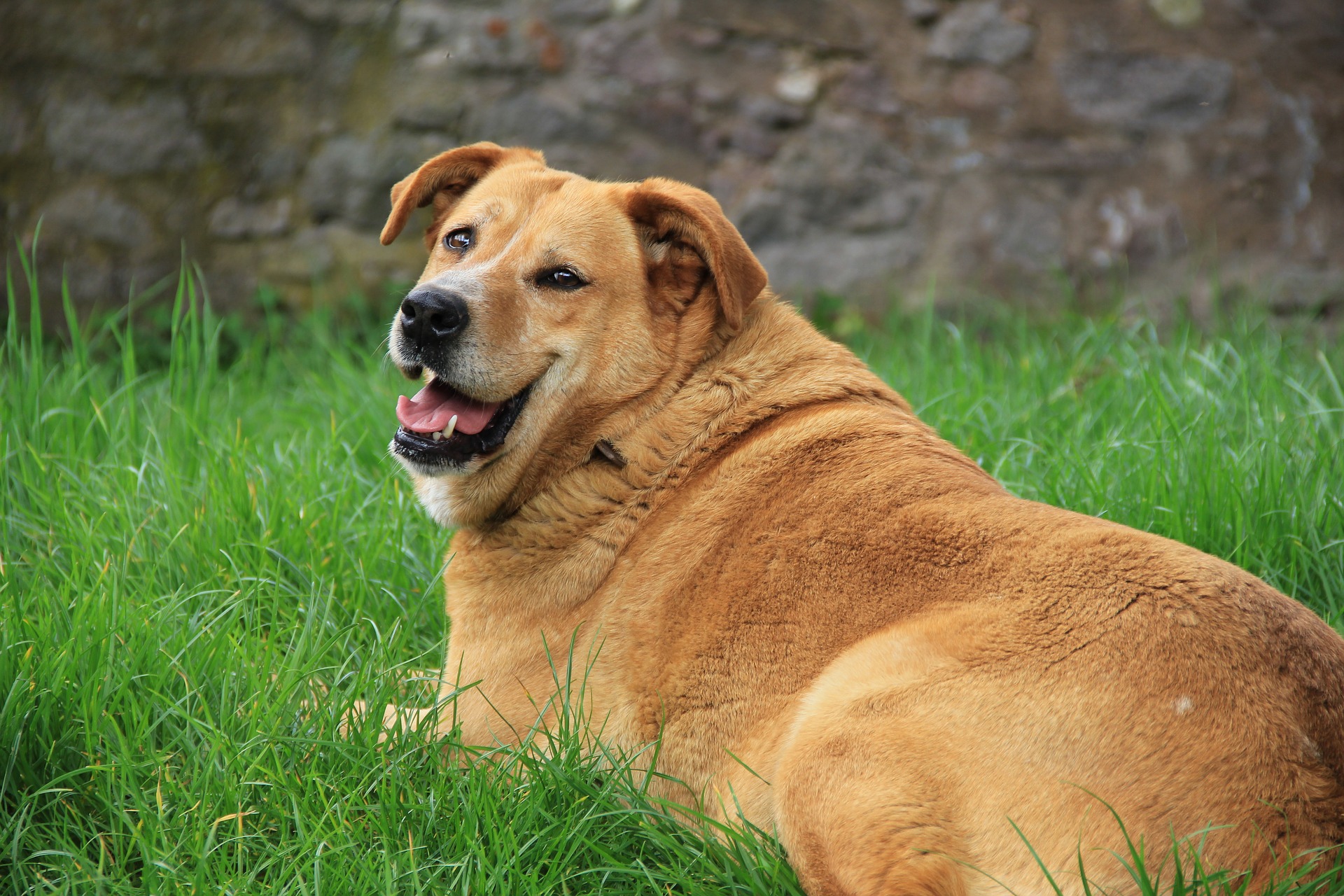If you are facing the reality of an overweight dog, it may seem like a monumental task to help him to lose those extra pounds. However, getting your dog’s weight under control is a manageable goal when you have the right tools at your disposal. Though weight loss is a long and often frustrating process, keeping your pet fit can do wonders for increasing their life span and making those extra years happy and healthy.

When a dog is overweight, it increases their likelihood of diseases such as:
- Osteoarthritis
- Joint injuries
- Diabetes
- High blood pressure
- Heart disease
Fitter dogs tend to spend more time playing with the family. This makes it easier to notice early signs of illness like lethargy if they aren’t usually laying around all day.
Your Dog’s Diet
Diet is the biggest factor in your pup losing and then maintaining a healthy weight. Most people feed their dogs too many calories without realizing they are overdoing it. Here is a great tool for calculating your dog’s daily calorie needs, but will require a bit of math.
On the back of the dog food bag, there should be information on how many calories (kcal) are in a cup of food. Once you know your dog’s daily calorie requirements, divide that by how many times a day they get fed and how many calories are in a cup of food to determine how much they need per meal.
Low-calorie foods allow you to feed your dog the same amount while still promoting weight loss. Look for phrases like “weight management” or “healthy weight”, but always check the calories per cup as some foods are high in calories despite what they advertise. Diet foods vary in the levels of macronutrients (protein, carbohydrates) they contain, so be sure to talk with your veterinarian about which will work best for your pup.
Here’s a Hint: Make the transition to a new diet over at least one week to allow their digestive tract to get used to it. For the first few days, replace 25% of your dog’s old food with the new, and increase the ratio from there.
Exercise & Your Dog’s Weight
Increasing the amount of exercise your dog gets will help them (and you!) in the long run. However, just going for long walks won’t help if they do not raise your dog’s heart rate enough to promote weight loss. Instead of going for a long, leisurely paced (20-25 miles/hour) walk, try going on a 30-minute brisk walk or jog.
Puzzle feeders, especially ones that they have to move around, can be a great way to stimulate your dog’s mind and get them moving. You can also move their food bowl around, forcing Fido to get a little exercise on the way to the bowl.
When Diet & Exercise Aren’t Enough
Stop by your vet’s office every month for a weight check to make sure you’re on the right track. If your dog is struggling to lose weight, a medical reason could be to blame. Hormone imbalances affect dogs just like people and can make weight loss difficult or even impossible without regulation. Diseases that can cause weight gain include hypothyroidism and hyperadrenocorticism (Cushing’s disease), and are diagnosed through blood tests.
As with everything, be sure to talk to your veterinarian before beginning a weight loss regimen to address your dog’s weight.
Gulf Coast K9 Dog Training is a obedience and dog training school located in Bradenton. Be sure to call us for obedience classes, onsite boarding and puppy training.




